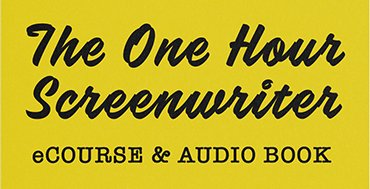Fast for Writing Fitness


When stumbling against a block in creating your story, I strongly suggest you undertake a media fast. What is a media fast? It is similar, in concept, to a food fast.
Dietary fasting helps lighten the body’s physical load and allows it to rest digestively. Taking a break from all the stories in the media can lighten the load on your brain and allow more space for your own story to gestate and form.
For years, holistic physician Dr. Andrew Weil has recommended occasionally taking a media break. He believes media fasts are an integral part of good health and are outlined in his book, Eight Weeks to Optimum Health.
Dr. Weil writes, “I think it’s useful to broaden the concept of nutrition to include what we put into our consciousness as well (as into our bodies).” He writes, “Many people do not exercise much control…and as a result take in a lot of mental junk food.”
I strongly recommend that you take a break from all factual and fictional media stories to get over a block in your story.
Don’t read the newspaper or any magazines. Don’t watch any television news or entertainment programs. Don’t listen to talk radio. Don’t search the Internet for news, entertainment, or research.
Don’t read any other books, fact or fiction. Don’t even read the jokes and stories people send via email.
When you have down time allow yourself to be surrounded by silence or instrumental music. Go for a long walk, sit in a park, take relaxing bath. Keep the din of media story words at bay as completely as possible.
Why is a media fast important? It will help you feel calmer, more relaxed, and focused. When you still the relentless media clatter, you make more time for idle silence, quiet moments of reflection, and staring off into space. Allow yourself to be bored.
In those empty moment you will find time to daydream, muse, and think. Without media distractions, your story will begin to fill your head effortlessly. Be quiet enough to listen to your story whisper to you.
Turning off and tuning out all those competing stories will help you tune in and communicate more clearly with your characters. Let them fill in the blank space of your quiet moments. Listen to your characters’ voices in your head. Hear what they have to say.
Don’t forget to get more sleep and allow your unconscious mind to do its important work. I cannot stress enough that proper rest is a crucial tool to aid your imagination. Resting allows our creative impulses to bubble to the surface.
Do you dream at night? Write down your dreams. Are there any specific dream images or fragments that stick with you after waking? Write them down. What might these wisps have to do with your story?
Think about a story problem before going to bed and see what emerges when morning comes. Write down your first thoughts on waking. Even if they don’t make sense in the moment, write them down and come back to them later.
Don’t worry about being politically or socially irresponsible or missing out on essential news during your fast. It’s impossible in today’s invasive media world to miss truly significant events. Believe me, someone will tell you if anything really important happens.
Give yourself the gift of a few weeks of silence to allow your story to fill the void you create.
Sit, stare and think. Be still. Be at rest. Your story will coalesce in those empty moments. Listen to the quiet inner voice that is your creative consciousness. Allow your own words to fill the stillness and listen carefully as your characters begin to speak more clearly!
Hermann Hesse, Nobel Prize winner for Literature says it clearly: “Within you there is a stillness and a sanctuary to which you can retreat at any time and be yourself.” Go inside when facing a writing block.



Create a visual map for a character’s emotional journey. Pull stories from character rather from rote story structure beats. Some of the largest international media companies, use this in story and character development.


A clear concise guide for writers and producers to have by their side as they embark on a project. It gives a really vital reminder of what is key for story success.

No comment yet, add your voice below!